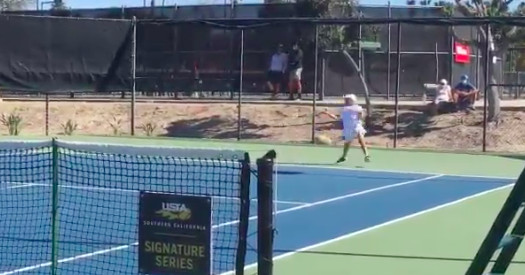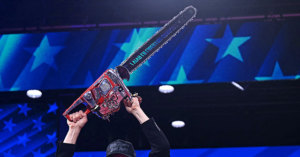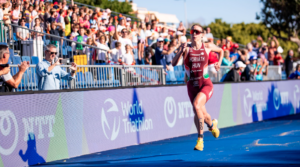https://www.sbnation.com/tennis/2021/4/14/22383742/teo-davidov-tennis-no-backhand-ambidextrous-video
10-year-old tennis star Teo Davidov is capturing the imaginations of tennis fans after video went viral of the ambidextrous youngster playing a point without ever switching to his backhand.
Davidov’s technique is paying dividends early. Last month he made waves at Adidas Easter Bowl in San Diego when the Denver-native made it all the way to the Under-12 quarter finals by exclusively hitting forehand, changing racquet hands as needed along the way.
The advantages of playing only forehand are fairly obvious. Players generate more power on their forehand typically, and it offers a reach advantage by not needing to bring the dominant arm across a player’s body. However, the reason Davidov plays left handed isn’t wholly for some competitive edge, but because his father, a practitioner of holistic medicine, and his tennis coach thinks it will some how alter his son’s brain chemistry. Kalin Davidov explained his reasoning to The Guardian:
“When Teo was about to turn eight years old, I decided he’s going to start playing left-handed, to affect his right hemisphere of the brain. He’s way too extroverted, too fiery, a little too imbalanced, so I just wanted to affect the right hemisphere of his brain, using the left part of his body,” Kalin told the Guardian in a video call.
In addition the boy practices yoga, alternate nostril breathing, and keeps practicing through injury — using whichever arm isn’t sore so he can keep playing.
This isn’t exactly some new, pioneering theory in tennis. Players have attempted the “all forehand” approach before, but normally haven’t had sustained success. There is one player currently on tour who hits ambidextrous forehands, Korea’s Cheong-Eui Kim, currently ranked 888th in the world, and peaked at No. 296 in 2015.
While the hand-switching method may seem appealing, it’s doubtful it will work long term. At a young age players can reasonable switch hands due to slow ball speeds, but as they approach teenage tennis, and into adulthood it simply becomes too difficult to switch hands quickly enough to keep up with the pace of the game. It also causes issues at the net, where hand switching on volleys is simply impossible.
For now, people are keeping their eye on the 10-year-old to see if he can break the mould. His ambidextrous style may not have succeeded in the past — but Davidov, and his family, hope he can become the first.













